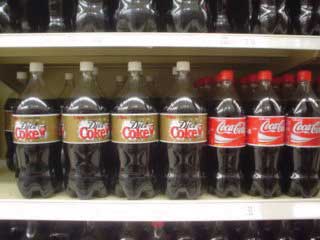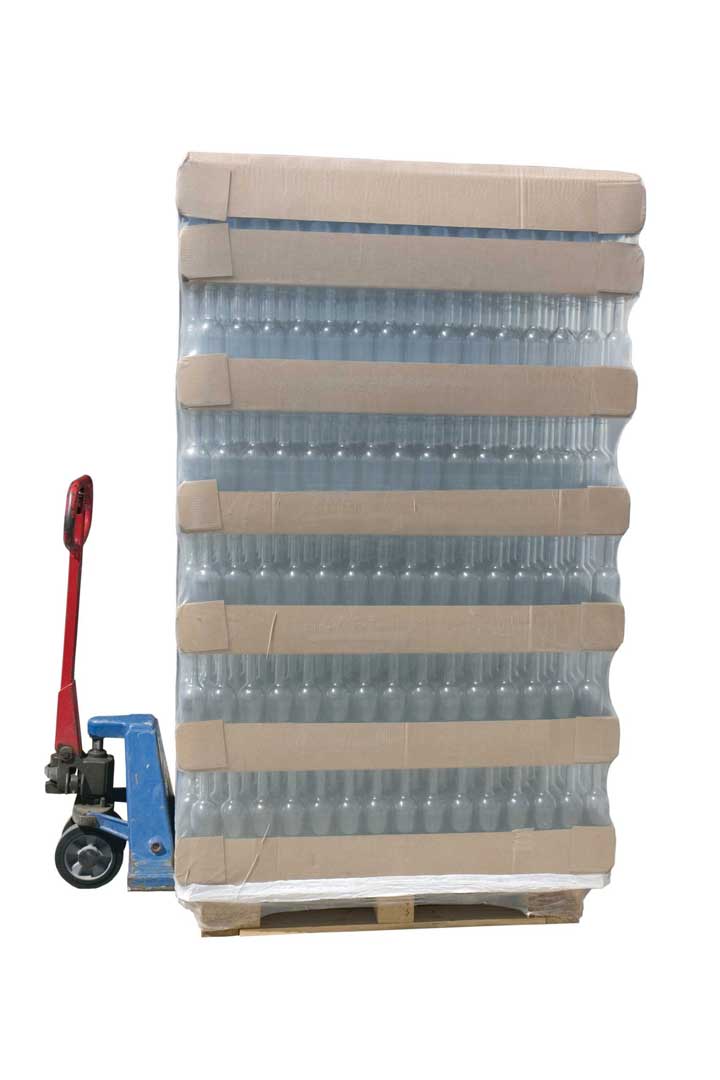This is “Branding, Labeling, and Packaging”, section 6.4 from the book Marketing Principles (v. 2.0). For details on it (including licensing), click here.
For more information on the source of this book, or why it is available for free, please see the project's home page. You can browse or download additional books there. To download a .zip file containing this book to use offline, simply click here.
6.4 Branding, Labeling, and Packaging
Learning Objectives
- Understand the branding decisions firms make when they’re developing new products.
- Identify the various levels of packaging for new products.
What comes to mind when someone says Coke or Nike or Microsoft? According to BusinessWeek magazine, the Coca-Cola brand is the strongest brand in the world. However, a global study of consumers sponsored by Reuters found that Apple has the best brand. What is a “brand” and what do these studies mean when they report that one brand is the strongest or the best?
Branding
We have mentioned brands periodically throughout this chapter. But what is a brand? A brandA name, picture, design, or symbol, or combination of those elements, used by a seller to differentiate its offerings from competitors’. is a name, picture, design, or symbol, or combination of those items, used by a seller to identify its offerings and to differentiate them from competitors’ offerings. BrandingA set of activities designed to create a brand and position it in the minds of consumers. is the set of activities designed to create a brand and position it in the minds of consumers. Did you know that The Beatles started a recording studio called Apple? When Apple Computer (the iPod company) was formed, Apple Corp., Ltd. (the Beatles’ recording studio), sued Apple Computer because two companies with the same name can create confusion among consumers. This wasn’t much of a problem when Apple was only selling computers, but following the release of the iPod and launch of Apple’s iTunes program, a case could be made that the companies’ offerings are similar enough for consumers to confuse the two companies and their products. In fact, it wasn’t until very recently that the lawsuit over the name was settled, some thirty years after the initial lawsuit was filed. Nonetheless, the situation signifies how important brand names are to the companies that own them.
A successful branding strategy is one that accomplishes what Coke and Apple have done—it creates consumer recognition of what the brand (signified by its name, picture, design, symbol, and so forth) means. Consequently, when marketing professionals are considering whether a potential new offering fits a company’s image, they are very concerned about whether the offering supports the organization’s brand and position in the mind of the consumer. For this reason, many consider branding to be much more than how the product is packaged or labeled, and they are right. Characteristics of the offering, such as pricing and quality, have to support the brand’s position. If Apple (the brand) stands for innovation, then products and services have to be innovative. But branding itself refers to strategies that are designed to create an image and position in the consumers’ minds.
A brand nameThe spoken part of an identity used to describe of a brand., like Apple, is the spoken part of a brand’s identity. A brand markA symbol or logo used to identify a brand. is the symbol, such as Coke’s wave or Apple Computer’s multicolor apple (not to be confused with Apple Records’ green apple), associated with a brand. Brand names and brand marks are important to companies because consumers use them to make choices. That’s why it was important to sort out the Apple brand. Each company wanted to make sure that consumers were getting what they wanted and would know what each brand meant.
An important decision companies must make is under which brand a new offering will be marketed. For example, Black & Decker makes power tools for consumers under its Black & Decker brand, while tools for more serious do-it-yourselfers and professionals are under its Dewalt brand. If Black & Decker decided to add to its Dewalt line new products such as coolers, portable radios, CD players, and other accessories construction professionals might find useful at a job site, the company would be creating a brand extension. A brand extensionThe process of utilizing an existing brand name or brand mark for a new product category. involves utilizing an existing brand name or brand mark for a new product category.
Why would Black & Decker add these accessories to the Dewalt line? If the company did, it would be because Dewalt already has a good reputation for high quality, long-lasting durability, and performance among construction professionals. These same professionals would trust the Dewalt brand to deliver. How a company like Black & Decker goes about building this trust is the subject of later chapters. For now, let’s consider whether it is better for a company to market a new product via a brand extension or create an entirely new brand for the product.
One thing firms have to consider when they’re branding a new offering is the degree of cannibalization that can occur across products. CannibalizationWhen a new product takes sales away from the same company’s existing products. occurs when a firm’s new offering eats into the sales of one of its older offerings. (Ideally, when you sell a new product, you hope that all of its sales come from your competitors’ buyers or buyers that are new to the market.) A completely new offering will not result in cannibalization, whereas a line extension likely will. A brand extension will also result in some cannibalization if you sell similar products under another brand. For example, if Black & Decker already had an existing line of coolers, portable radios, and CD players when the Dewalt line of them was launched, the new Dewalt offerings might cannibalize some of the Black & Decker offerings.
Some marketers argue that cannibalization can be a good thing because it is a sign that a company is developing new and better offerings. These people believe that if you don’t cannibalize your own line, then your competitors will.
Packaging Decisions
Another set of questions to consider involves the packaging on which a brand’s marks and name will be prominently displayed. Sometimes the package itself is part of the brand. For example, the curvaceous shape of Coca-Cola’s Coke bottle is a registered trademark. If you decide to market your beverage in a similar-shaped bottle, Coca-Cola’s attorneys will have grounds to sue you.
Figure 6.15

Sometimes the package itself is part of a licensed brand. Coke’s curvaceous bottle is an example.
Source: Wikimedia Commons.
Packaging has to fulfill a number of important functions, including
- communicating the brand and its benefits;
- protecting the product from damage and contamination during shipment, as well as damage and tampering once it’s in retail outlets;
- preventing leakage of the contents;
- presenting government-required warning and information labels.
Sometimes packaging can fulfill other functions, such as serving as part of an in-store display designed to promote the offering.
Figure 6.16

A single wholesale unit of a product, such as these empty cartons shown here, is an example of secondary packaging. Each of these boxes might hold, for example, twenty-four cans of car polish or thirty-six cans of bug spray.
© 2010 Jupiterimages Corporation
Primary packagingPackaging designed to hold a single retail unit of a product. holds a single retail unit of a product. For example, a bottle of Coke, a bag of M&Ms, or a ream of printer paper (five hundred sheets) are all examples of primary packages. Primary packaging can be used to protect and promote products and get the attention of consumers. Primary packaging can also be used to demonstrate the proper use of an offering, provide instructions on how to assemble the product, or any other needed information. If warning or nutrition labels are required, they must be on the primary packaging. Primary packaging can be bundled together as well. Consumers can buy bottles of Coke sold in six-packs or cans of Coke in twelve-packs, for example.
Secondary packagingPackaging designed to hold a single wholesale unit of a product. holds a single wholesale unit of a product. A case of M&M bags is an example, as are cartons of reams of paper. Secondary packaging is designed more for retailers than consumers. It does not have to carry warning or nutrition labels but is still likely to have brand marks and labels. Secondary packaging further protects the individual products during shipping.
Tertiary packagingPackaging designed for the shipping and efficiently handling of large quantities of a product. is packaging designed specifically for shipping and efficiently handling large quantities. When a Coca-Cola bottler ships cases of Cokes to a grocery store, they are stacked on pallets (wooden platforms) and then wrapped in plastic. Pallets can be easily moved by a forklift truck and can even be moved within the grocery store by a small forklift.
Figure 6.17

This product is bound in tertiary packaging so that mass quantities of it can be stacked on pallets and moved with a forklift.
© 2010 Jupiterimages Corporation
A product’s packaging can benefit the customer beyond just protecting the offering while it’s being shipped. No-spill caps, for example, can make it easier for you to use your laundry detergent or prevent spills when you’re adding oil to your car’s engine. And, as we have noted, secondary packaging (and also tertiary packaging) can serve as part of an in-store display, thereby adding value for your retailers.
Key Takeaway
A brand is a name, picture, design, or symbol, or combination of those items, used by a seller to identify its offerings and differentiate them from competitors’ offerings. Branding is the set of activities designed to create a brand and position it relative to competing brands in the minds of consumers. An important decision companies must make is under which brand a new offering will be marketed. A brand extension involves utilizing an existing brand name or brand mark for a new product or category (line) of products. Cannibalization occurs when a company’s new offering eats into the sales of one of its older offerings. It is something to be avoided in most cases, but it can also be a sign of progress because it means a company is developing new and better products. Packaging protects products from damage, contamination, leakage, and tampering, but it is also used to communicate the brand and its benefits, product warnings, and proper use.
Review Questions
- How do brands help companies market their products?
- What is the purpose of a brand extension?
- Name the basic types of packaging used in marketing.
We want to hear your feedback
At Flat World Knowledge, we always want to improve our books. Have a comment or suggestion? Send it along! http://bit.ly/wUJmef




